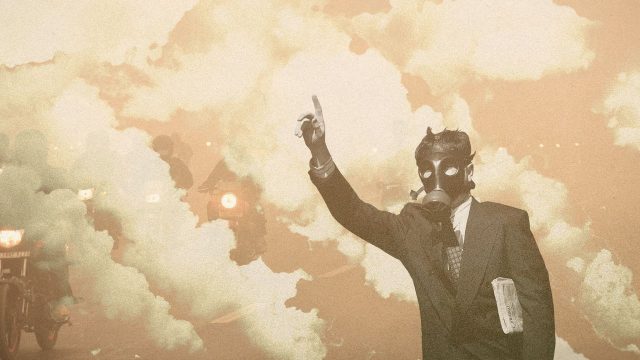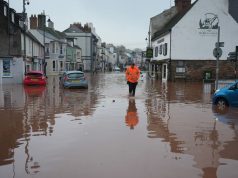
Protesters in Delhi wore oxygen masks and carried gas cylinders as they took to the streets to highlight the authorities’ failure to tackle the city’s ever-worsening air pollution.
There’s a “dystopian” environment in the Indian capital as a particularly “persistent toxic haze” shrouds the city, with slow winds and cooling temperatures preventing pollutants from dispersing, said The Independent.
‘Gasping for breath’
India’s “winter air pollution season” arrived “with a vengeance” this year, “blanketing New Delhi in a sickly-looking, toxic yellowish haze”, said the Financial Times. The mix of “smoke from winter stubble burnt by farmers” and “fumes from cars, factories and power plants” makes everyday life a struggle; “even a few minutes outdoors leaves you feeling ill and gasping for breath.”
Over recent weeks, Delhi’s Air Quality Index, which measures the level of fine particulate matter in the air that can clog lungs, has been “hovering” between 300 and 400, nearly 20 times the acceptable limit, said the BBC. On Friday, it reached 455 – “equivalent to smoking nearly 11 cigarettes a day”, said The Indian Express.
The situation is so severe that the Supreme Court has asked health authorities to cancel all outdoor sports activities in schools until the haze lifts. The court ruled that allowing children to take part in such activities during November and December, when pollution levels are at their peak, is like “putting them in a ‘gas chamber’”, said the news site.
‘No panacea’
Authorities carried out an unsuccessful trial of cloud seeding, “firing small particles” into clouds to produce rain. The process is used around the world, but experts say it is “no panacea”, said The Guardian. Although it is meant to “produce more frequent and heavier rain than the clouds would otherwise release”, in practice the impact is “often small”. Two professors told the newspaper that the plan to use it in Delhi was a “gimmick”.
As for Delhi residents, their options depend on their economic status. During the “miasma”, the rich “retreat to their houses, where air purifiers offer some respite”, said the Financial Times, and others “decamp for the cleaner climes of Himalayan hill stations”. But “the poor have to put up with the poison air”.
According to recent polling, almost four out of five households in the Delhi metropolitan area “have had at least one member fall ill due to toxic air in the past month”, said the Hindustan Times. One doctor at the All India Institute of Medical Sciences said hospital wards “are overflowing with people suffering from wheezing, breathlessness, burning eyes, and fast-deteriorating COPD”.
Indian capital has tried cloud seeding to address the crisis, which has seen schools closed and outdoor events suspended





